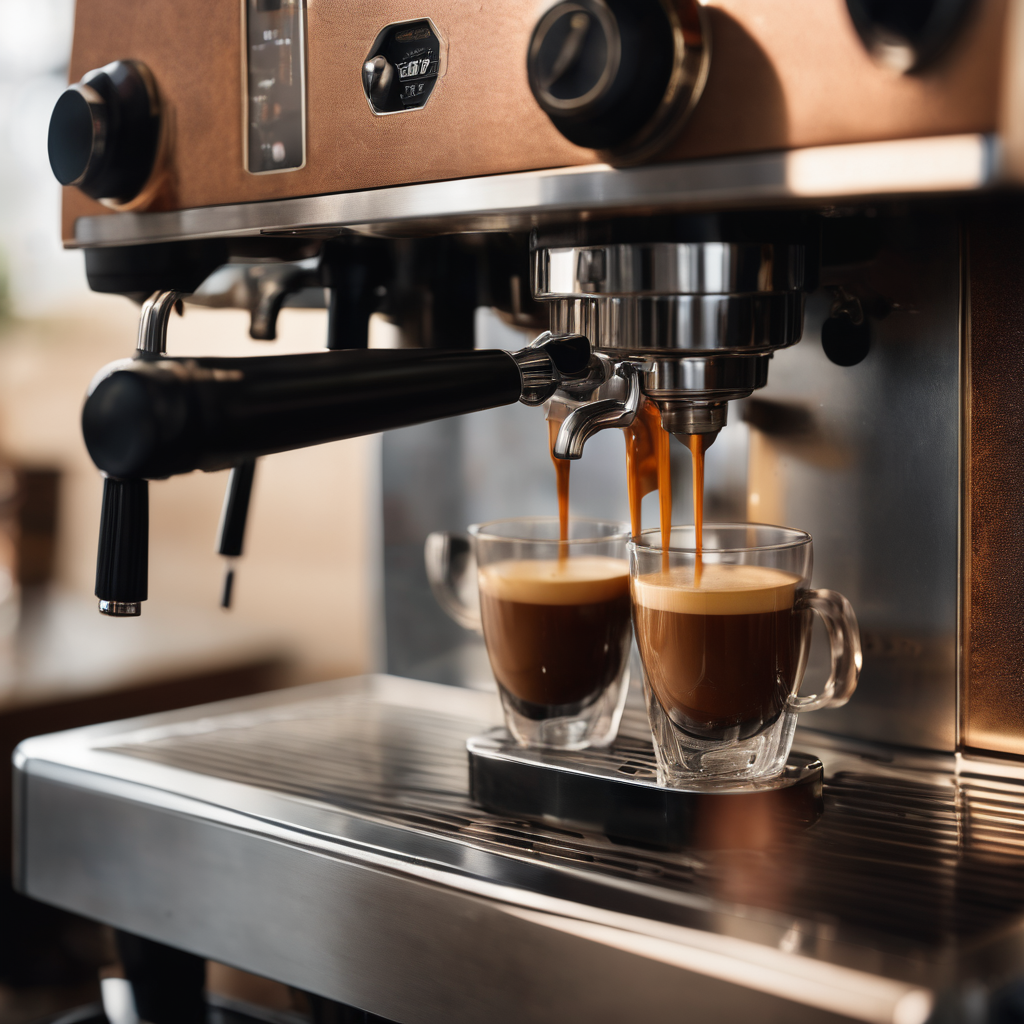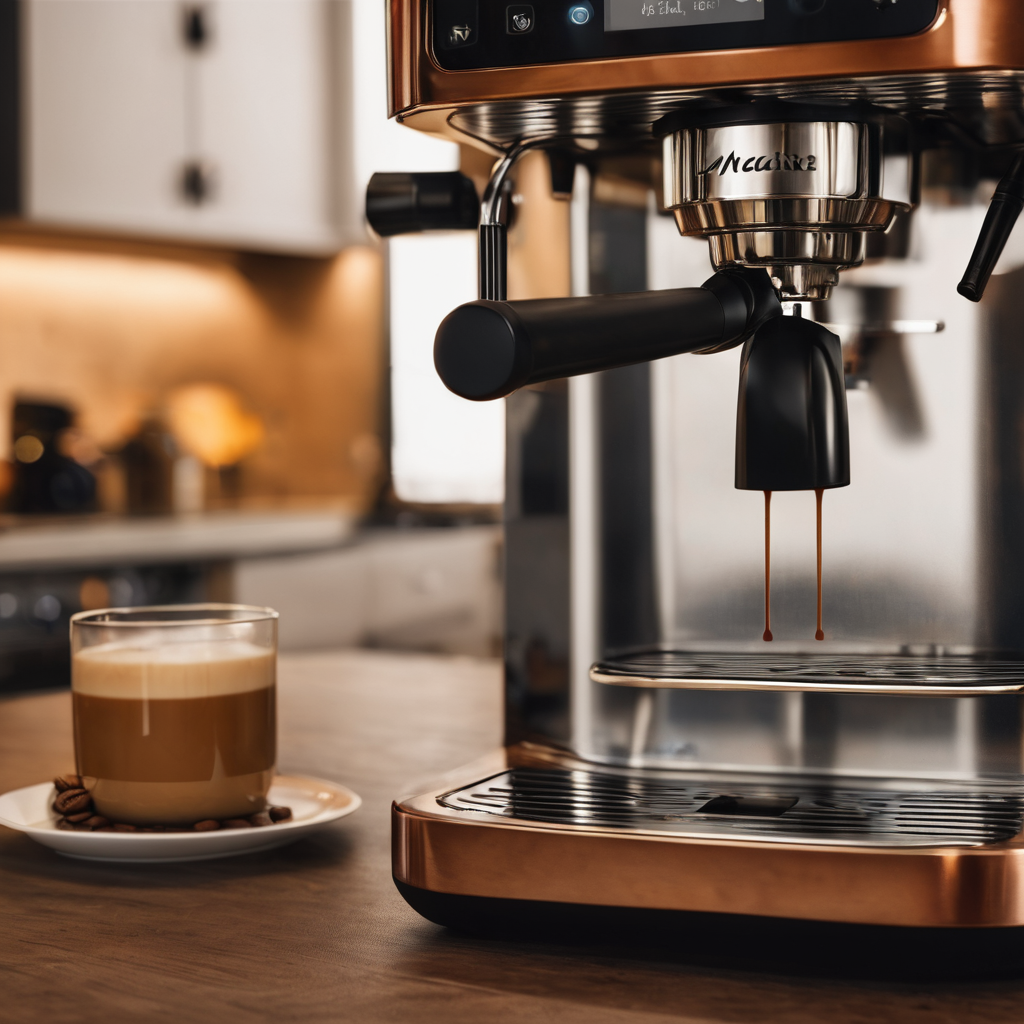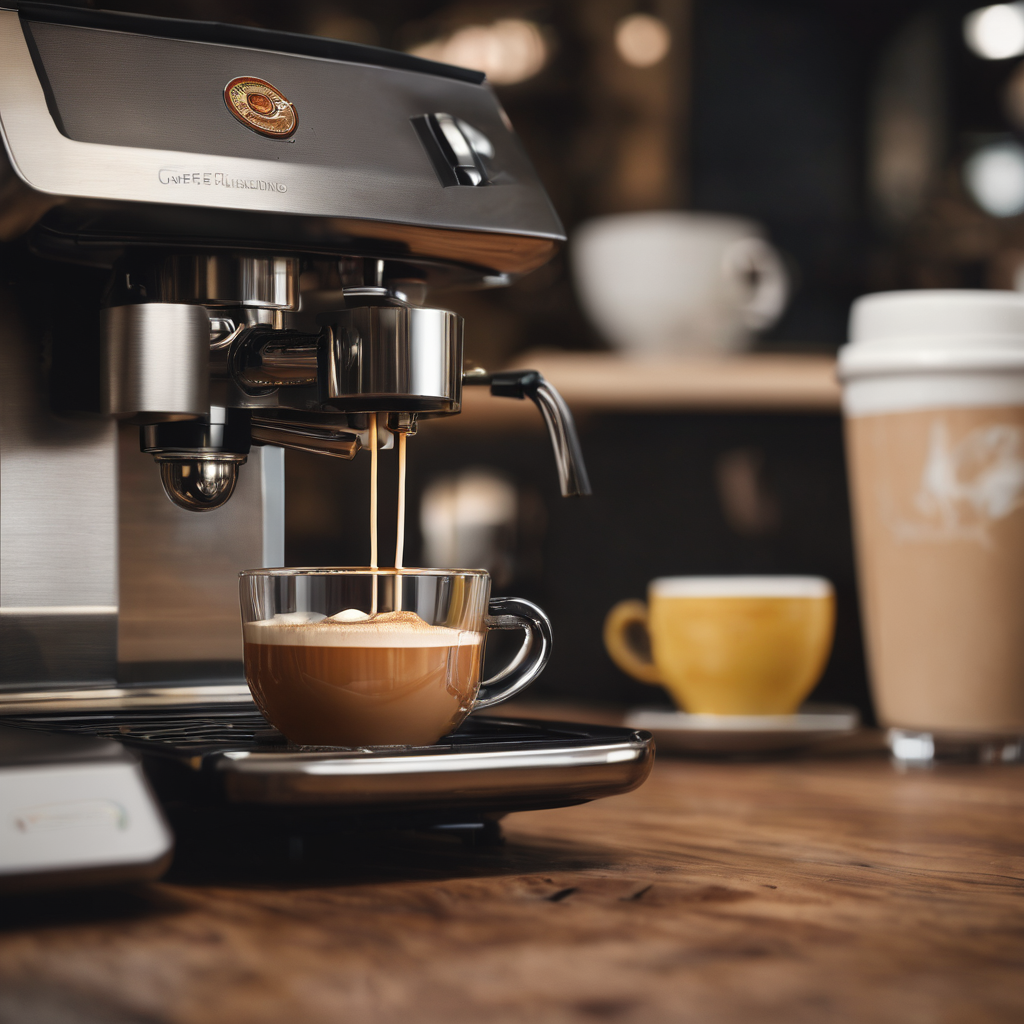Tips for Espresso Machine : If you really enjoy coffee and want to make tasty espresso at home, you might be thinking about getting an espresso machine. But before you buy one, it’s important to think about some important things.
This article will tell you about the main features, steps, and helpful tips to know before getting an espresso machine. Also, check out our blog post on the “8 Best Espresso Machines for Easy Home Brewing. “
# 1 Tips for Choosing an Espresso Machine
An espresso machine brews strong and delicious coffee by forcing hot water through finely ground coffee. There are various types of espresso machines, such as manual, semi-automatic, fully automatic, and super-automatic. Each type has its own advantages and drawbacks, depending on your preferences.
When selecting an espresso machine, consider features like:
- Boiler: The boiler is like the hot water maker in a machine that helps with brewing and steaming. There are three main types: single, dual, and heat exchanger. A single boiler can only do one thing at a time, either brewing or steaming. A dual boiler has two separate parts for brewing and steaming, so you can do both together. In a heat exchanger, there’s one boiler with a coil inside to heat water for brewing, and the rest is used for steaming.
- Brewing Power: The pump is like the engine that makes the pressure for making coffee. There are two main kinds of pumps: vibration and rotary. A vibration pump is cheaper and quieter, but it’s not as steady and long-lasting. A rotary pump costs more and is noisier, but it’s more reliable and lasts longer.
- Coffee Holder: The coffee holder is the part of the coffee machine that keeps the coffee grounds. There are two main types: one that’s easier to use and forgiving of mistakes, and another that requires more skill. The easy one has a valve to control water, while the other doesn’t, so you need to be more careful with it.
- Portafilter Connection Mechanism: The group head serves as the component linking the portafilter to the boiler in espresso machines. There are primarily two types of group heads: E61 and thermoblock. An E61 group head, characterized by its classic design, features a metal chamber that circulates hot water to maintain a consistent temperature. On the other hand, a thermoblock group head, showcasing a more contemporary design, incorporates a metal block that heats water as needed, leading to energy efficiency and space savings.
# 2 Tips for Espresso Machine: Brewing Perfect Espresso
Making a great espresso involves four important steps: grinding, measuring, pressing, and extracting. Each step really affects how good the coffee tastes. It’s important to follow the best ways of doing things to get a delicious cup of espresso.
Grinding : Grinding is when you turn coffee beans into tiny pieces. How small or big you make them affects how espresso tastes. If you grind them fine, it takes longer and tastes stronger. If you grind them coarser, it’s quicker but not as strong. Making sure the grind is the same throughout is important for a good taste. If it’s not, the coffee might taste bitter or have uneven flavors. To get an even and changeable grind, it’s best to use a burr grinder instead of a blade grinder.
Dosing : Dosing is figuring out how much coffee to use for each espresso shot. It depends on the size and shape of the filter and what you like. Usually, use 14 to 21 grams of coffee, depending on the type and how strong you want it. Use a scale to measure accurately, and a dosing funnel to avoid spilling and wasting coffee grounds.
Tamping : Tamping is like squishing the coffee grounds down to make a flat, solid puck. How hard and straight you press the tamper affects how the water flows through. Doing it right makes a nice, even puck, but doing it wrong can make the coffee uneven. Just use a tamper that fits the coffee holder well, press down with about 30 pounds of pressure, and keep everything nice and flat while you do it.
Making Espresso: Making espresso involves pushing hot water through coffee grounds with strong force, creating a tasty and fragrant coffee. How long you let this process go on and the amount of coffee used affect how much you get and how it tastes. Typically, it takes 20 to 30 seconds for the process, depending on how fine the coffee is ground and how much you use. The ratio of coffee to water, ranging from 1:1 to 1:3, depends on the type of coffee and how strong you want it. To make sure you get it right, use a timer for the time and a scale to measure the amount of coffee.
# 3 Tips for Espresso Machine : Coffee Grinder Compatibility
A coffee grinder is a must-have for making great espresso. It helps you grind coffee beans into a fine powder. But not all grinders work well with espresso machines. They need to meet certain requirements. When picking a grinder for your espresso, consider these things:
Burr Grinder Types: A burr grinder is a machine that crushes coffee beans into tiny bits using either two spinning discs or cone-shaped parts. There are two main kinds of burr grinders: flat and conical. Flat ones have two flat discs facing each other, making the coffee grind more even and exact. But, they can get hot and noisy. Conical grinders have two cone-shaped discs that fit together, making the grind less even and exact, but they are cooler and quieter.
Grind Size Range: Imagine grind size as the different levels of coffee coarseness or fineness. For making espresso, you need a grinder that can do a super fine grind. But if you’re making regular coffee with a drip machine or French press, you want a grinder that can do a coarser grind. So, different grinders are good for different types of coffee because they can make the coffee grounds either really fine or a bit chunkier.
Grind Size Adjustment: Adjusting the grind size means changing how finely or coarsely your coffee beans are ground in a grinder. For making espresso, it’s important to use a grinder with a precise and smooth grind size adjustment because espresso needs a very fine and exact grind. On the other hand, if you’re making drip or French press coffee, a grinder with a coarse and stepped grind size adjustment works better because these methods need a less fine and more general grind.
Grind retention: Grind retention means how much coffee stays in the grinder after you grind it. For espresso, it’s best to have very little left in the grinder because espresso needs fresh coffee. But if you’re making drip or French press coffee, it’s okay if there’s more left in the grinder because these methods aren’t as picky about having super fresh grounds.
# 4 Tips for Espresso Machine : Budget-Friendly Options
Buying an espresso machine can be expensive because it has complicated technology. But don’t worry, there are cheaper options that still make good espresso. Here are some affordable choices to think about:
Manual espresso machines: A manual espresso machine involves hands-on operation, requiring the use of a pump, boiler, and portafilter. This type grants users greater control over the coffee-making process, but it demands additional effort and skill. Manual machines are generally more affordable and straightforward compared to automatic ones, given their simpler design with fewer components. Examples of manual espresso machines include the Flair, ROK, and La Pavoni.
Capsule Espresso Machines: These machines use special coffee pods or capsules that are already filled with coffee. They’re really easy to use and make coffee the same way every time. The only downside is that you don’t get the freshest or different types of coffee. These machines are usually cheaper and simpler than regular ones because you don’t need a grinder or other fancy tools. Examples of capsule espresso machines are Nespresso, Keurig, and Dolce Gusto.
Stovetop Espresso Makers: These are compact devices that use steam to make coffee on your stove. They’re easy to use and carry, but the coffee might not be as fancy as what you get from a bigger espresso machine. Stovetop espresso makers are usually cheaper and smaller because they don’t need electricity or fancy equipment. Some examples are Bialetti, Cuisinox, and BonVIVO.
# 5 Tips for Espresso Machine : Maintenance and Cleaning Tips
An espresso machine is a fancy gadget that needs regular cleaning and care to work well and last a long time. Here are some easy tips to keep it in good shape:
Backflushing : Backflushing is like giving your coffee machine a good cleaning. You run water through the machine without any coffee to get rid of oils and leftover stuff that might clog it up. Do this after each use with plain water and once a week with a special cleaner. To do it right, use a special basket without holes called a blind basket to create the pressure needed for backflushing.
Descaling: Descaling means getting rid of mineral buildup in your coffee maker’s boiler and pipes caused by using hard water. To keep things running smoothly, clean your machine every three to six months, depending on how hard your water is and how often you use it.
Cleaning the portafilter and the basket: After you brew coffee, clean the metal filter and basket each time. Use a brush, cloth, and hot water. Once a week, soak them in soapy water to remove tough stains and dirt. This keeps your coffee tasting great.
Cleaning the steam wand and the milk frother: It’s important to keep the steam wand and milk frother clean. After each use, wipe them with a damp cloth, use a brush, and wash with hot water to get rid of milk bits. Also, let out some steam before and after making milk froth to avoid clogs and germs. This helps prevent bad smells and keeps things hygienic.




